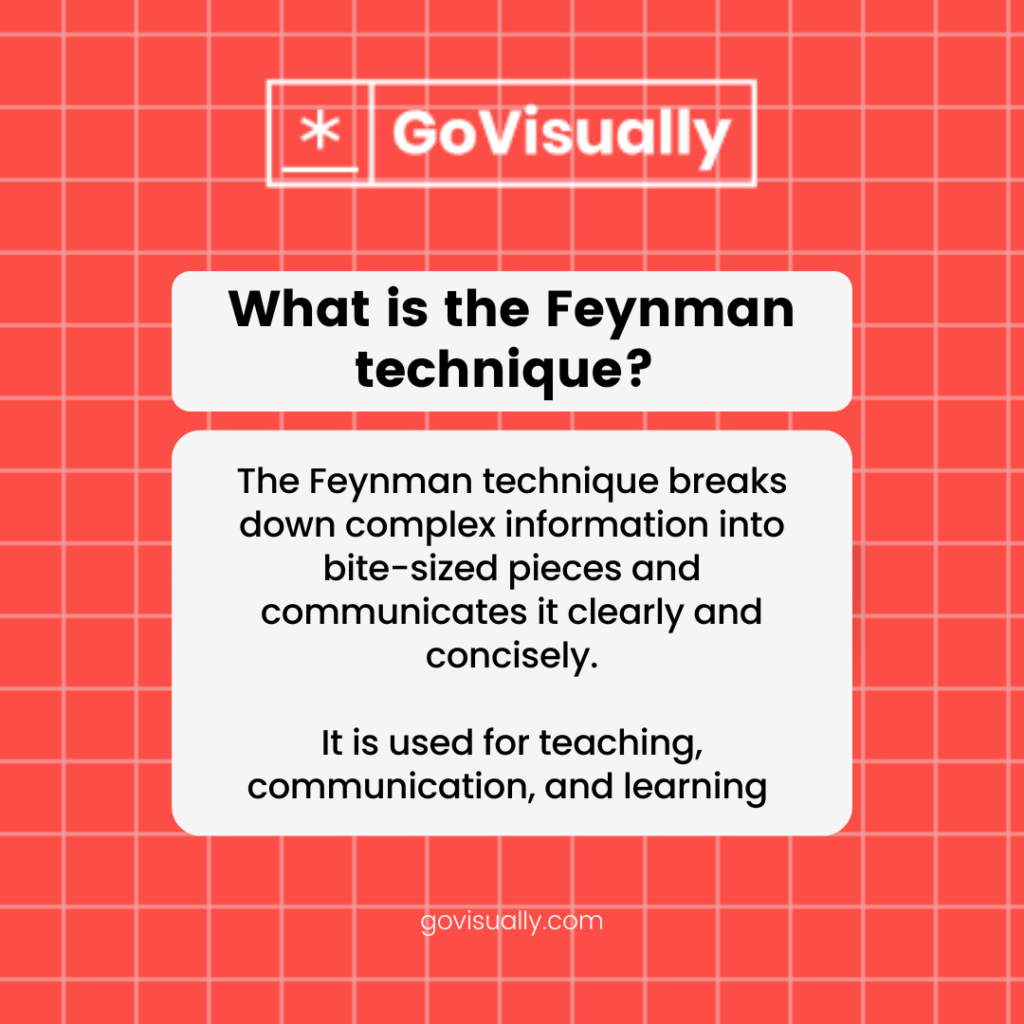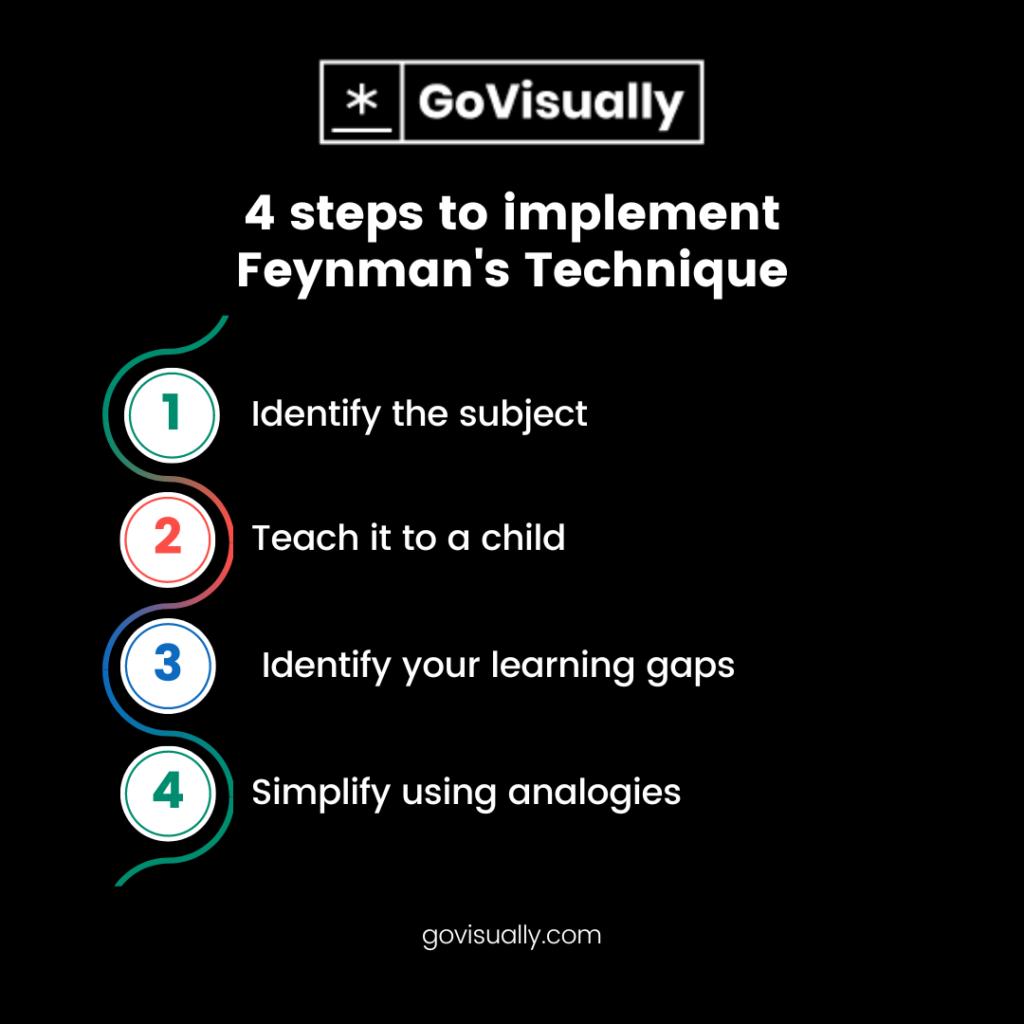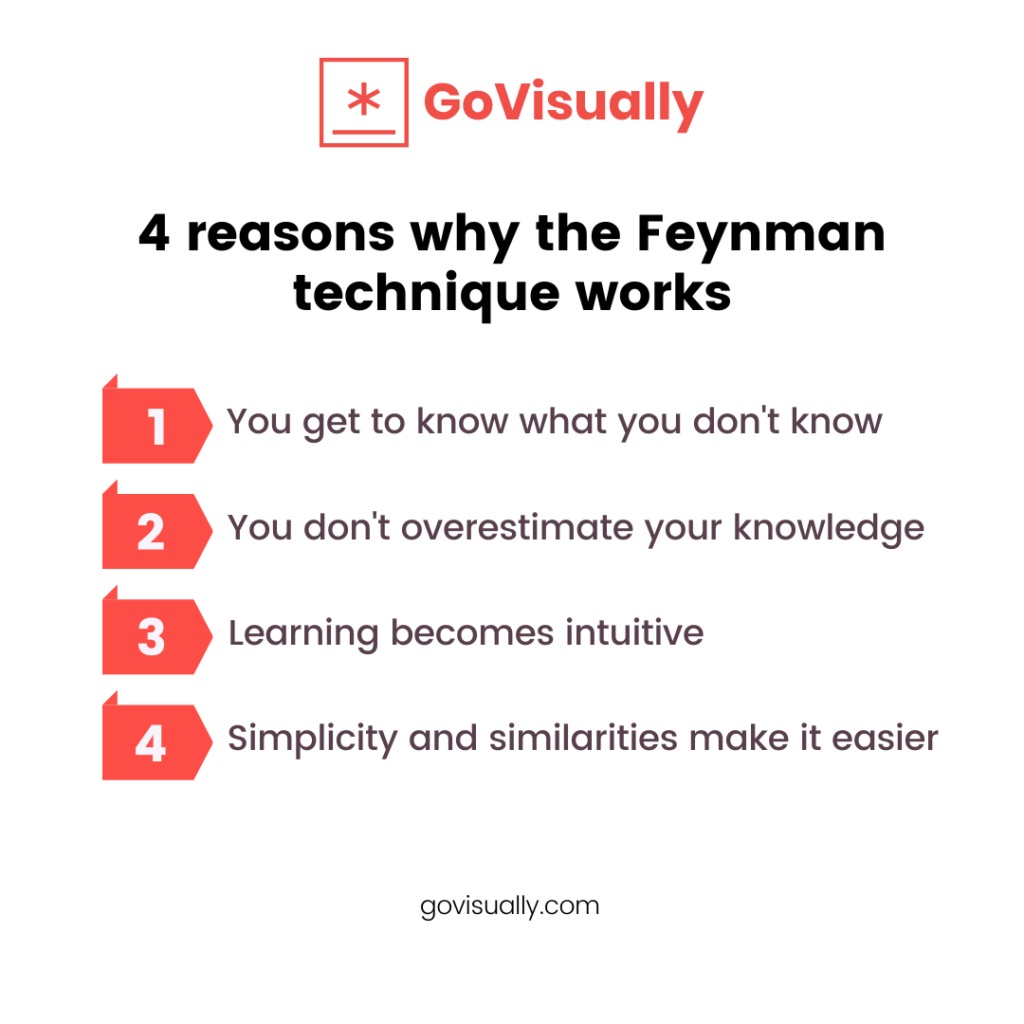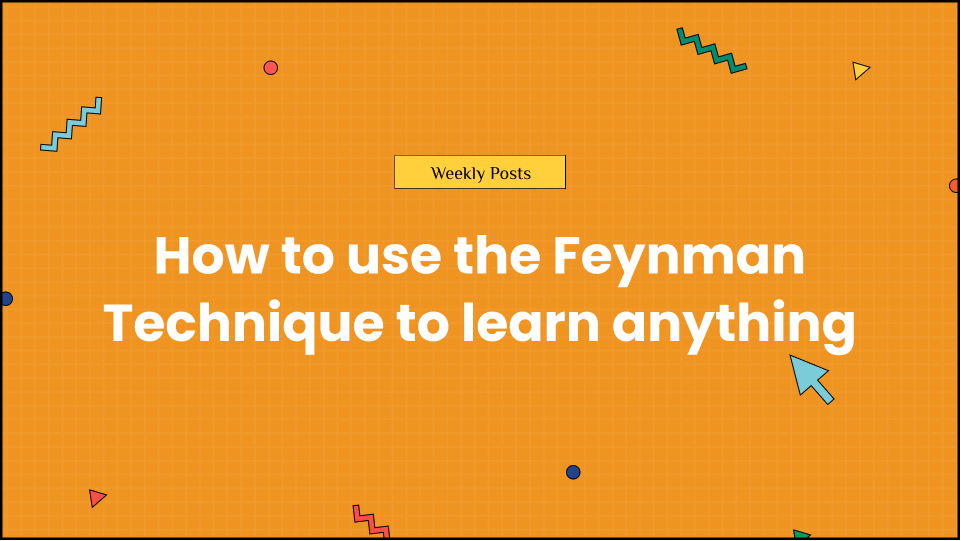We are all lifelong learners, but learning can be difficult sometimes.
The Feynman technique was suggested by ‘The Great Explainer’ to make learning perpetually easier and help you master the art of learning and teaching.
The Richard Feynman Technique is a proven learning method that can help you learn quickly and effectively. Applied and tested through many areas of education and work, the learning framework never fails to help you succeed.
If you’re looking for a learning strategy that could work for you, your students, or your employees, here’s the revolutionary guide to understanding and implementing the Feynman technique.
So without further ado, let’s begin learning about learning!
Table of Contents
Who is Richard Feynman?
Richard Feynman was a renowned physicist who made significant contributions to the field of quantum mechanics and particle physics. While being a Nobel prize winner, he was also a respected lecturer who taught at Cornell and Caltech, which earned him the name of “Great Explainer.”
Despite his accomplishments, Feynman thought of himself as someone who studied hard, like everyone else. He believed that anyone could learn if they put in the effort.
Have you ever experienced difficulty understanding the jargon used by coworkers or your teachers when trying to explain something? Yes, we get that feeling. It’s like hearing a greeting in German and looking for tags!
And Richard Feynman must have experienced it too, which led him to create his learning technique, and it’s time we truly explain the Feynman technique.

What is the Feynman technique?
The Feynman technique for teaching, communication, and learning is a way of breaking down complex information into bite-sized pieces and communicating it clearly and concisely. This particular method of studying is based on Feynman’s learning technique as a student.

Instead of memorization and rote learning, he chose to continually expand his skills and master new and complex concepts, having a framework for tackling puzzling problems. Today, this framework can be used in all fields, from computer science and psychology to product design and evolutionary biology.
The Feynman Technique is a four-step process for understanding any topic.
This technique prefers to rely on true comprehension gained through selective research and refinement.

Step 1: Identify the subject
The first step to implementing Feynman technique learning is to close in on your subject and focus on specific parts to learn, keeping it as narrow as possible. For example, a broad and abstract topic like “quantum physics” usually leads to a surface-level understanding of the topic.
Studying the basics will help you understand the domain more deeply. So the approach here is to break down the field into smaller topics and start with the fundamental concepts for each, followed by deep research and learning, like quantum sensing or coherence.
Step 2: Teach it to a child
The next step in Feynman’s system for learning things quickly is to teach what you know about your chosen topic in its simplest terms. Explain your understanding of the topic to someone else in a way that is as simple as possible, even for a child.
When writing an explanation, aim to make your writing understandable to a middle school student. When explaining something to a young person, you’ll have to simplify your language and remove difficult concepts or related jargon. This will help you use your words more effectively and look at the concept differently.
If you’re having trouble getting your thoughts across in a note, it shows you have room for improvement. The power of creativity can help you learn at a much faster pace and remember what you’ve learned more naturally.
Step 3: Identify your learning gaps
After writing your explanation down, revise it and answer these questions.
- Is something missing?
- What do you not know?
- Did you use jargon when you couldn’t find simple terms?
- Can a middle school student understand this?
When organizing your notes into a story, it’s important to highlight gaps in your knowledge. This will help you remember important details and connect the dots. If you don’t know anything, go back to the books.
Step 4: Simplify using analogies.
Feynman’s technique, in a nutshell, is the same as the quote, “If you can’t explain it simply, you don’t understand it well enough.” So learn until you can explain it in the simplest language.
Read any source material to fill any gaps in your knowledge and explore additional literature to learn the topic in a new way. If your explanation isn’t understandable to a young audience, can you make it simpler?
An ideal method is to use simple analogies, where comparisons provide a way to communicate a complex topic using easy-to-understand concepts daily.
Think of an analogy that will help you understand the concept better. You don’t need to use one you learned while studying this topic; come up with something you understand yourself. This will help you learn the material more effectively.
Why does the Feynman technique work?
The man who created this technique was interested in the what, how, and why of things to master them completely. Now that you understand the what and how of Feynman’s technique, you must also understand the why.
So let’s go through why Feynman technique learning works for everything.

1. You get to know what you don’t know
In his book, Genius, James Gleick explained how Feynman took the first step in his learning technique: “He opened a new notebook. He wrote on the title page: A notebook of things I don’t know. It wasn’t the last time he rearranged his knowledge, but it was the first….”
Using the Richard Feynman technique, you don’t just learn about things you don’t know but also become aware of how much you don’t know. There is no tricking yourself into believing you’re halfway through once you list everything you haven’t covered in detail.
Your learning goals also become concise, and starting small gives you more confidence and motivation to complete the task. Knowledge management becomes easier when you’re aware of the scope of your learning.
2. You don’t overestimate your knowledge
In reality, reading is not understanding. We can even take notes, essentially transcribing sentences of resources into our notebooks. We often nod to ourselves, thinking we’ve grasped the subject. However, true understanding requires a more active process than teaching.
By formally teaching yourself and summarizing what you’ve learned, you stop overestimating how much you know. Teaching someone else is even better because it will force you to explain things more simply and find loopholes in your explanation quickly.
It’s easy to admit your mental bias and conclude you’ve mastered the subject without testing yourself. Applying the second step is the most crucial part of the Feynman technique because it stops you from making this human mistake.
3. Learning becomes intuitive
Using the Feynman technique, you can maintain your knowledge by revisiting each step multiple times. When we actively participate in creating our summaries and reasoning, deliberately drawing on background information to fill in blind spots, we are more likely to retain knowledge in our long-term memory.
The more we learn, the more our ability to learn grows. When reading through a chapter of a textbook, it can feel like you’re reading a foreign language the first time around. The second time it becomes more evident. We can pick up subtleties we could not have seen before the third time.
The method works because it aligns with our inherent nature of remembering things we come across more often and vividly each time. As they say, practice makes perfect.
4. Simplicity and similarities make it easier
Simplicity is a valuable tool for understanding complex concepts. It’s easy enough to commit a bunch of terms in memory, but memory is not understanding. We have to reduce what we know to the basic form.
Understanding comes from deep contemplation and analysis, which is why analogies are easier to remember and explain. When you understand a complex concept, analogies allow you to create an abbreviated form to recall it quickly and explain it clearly to others.
After all, it’s human nature to learn better by finding similarities. We do that as toddlers learning about the world we have yet to see, and we can surely do that as adults to learn about the world we have yet to understand.

Final word
Learning takes time. So if you’ve taken the time to read this guide, rest assured that it will pay you off as soon as you start applying the Feynman technique in your education, work, and personal life.
Implementing what you’ve learned is another challenge, especially for creative professionals who learn new things every day but every minute.
A platform where knowledge and resource management is easier, the process is intuitive, and it’s simple to collaborate with others and teach them your way, GoVisually is the right platform for creative professionals who wish to implement their skills effectively afterward.




